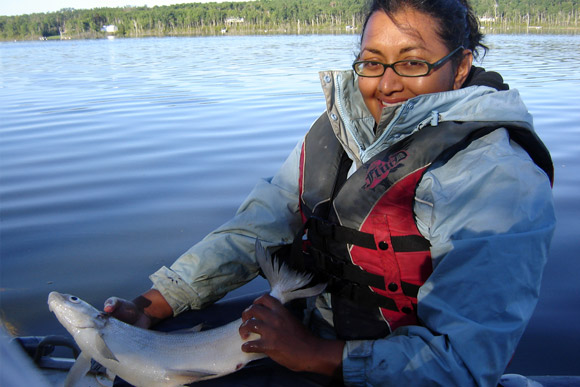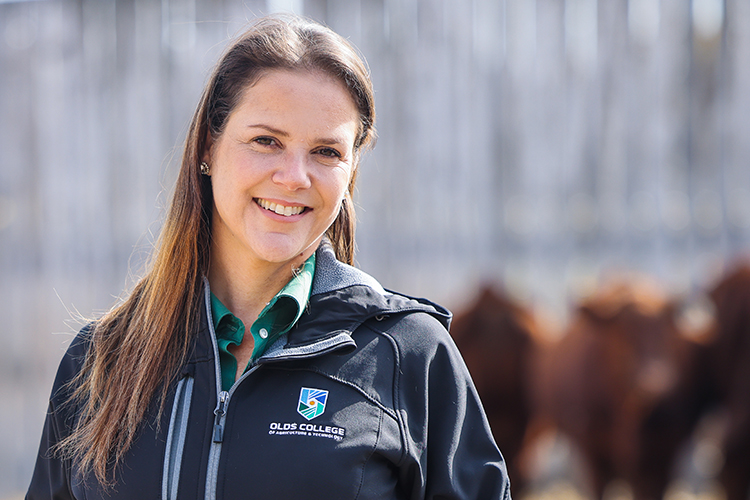Stopping an invasion

Lushani Nanayakkara
Photo: Brittany Hesjedal
Invasive species continue to be a critical threat to freshwater ecosystems in Saskatchewan and across North America. But the species that have yet to enter Saskatchewan waters might be of greatest concern. Zebra and Quagga mussels are invasive species from Eurasia that have severely altered the ecosystems of the Great Lakes and many other water bodies in North America. Now, these mussels are making their way toward Saskatchewan. The good news? They’re not here yet.
Educating lake users about the fact that the mussels are not in this province yet might be the key to preventing them from getting here, according to research from Lushani Nanayakkara, a PhD candidate in Aquatic Ecology at the University of Regina. She is working under the supervision of Drs. Björn Wissel and Peter Leavitt. Nanayakkara’s survey on lake-user perceptions and knowledge of prairie lakes was conducted in 2016. Her results have been published in the journal Biological Invasions.
The 476 respondents included lake users along areas of Saskatchewan including the Qu’Appelle River systems and Buffalo Pound Lake, Last Mountain Lake, Fishing Lake, Wakaw Lake, Little Manitou Lake and Redberry Lake. Nanayakkara found that people are aware of the existence of zebra and quagga mussels, but about 75 per cent of the respondents were unaware that these invasive species have yet to enter Saskatchewan waters.
“People might think that the battle is lost, that these invasive species have invaded our lakes and there’s not much else that can be done,” says Nanayakkara. “The danger of such misconceptions might decrease the likelihood of engaging people in preventative behaviours and that will ultimately undermine the province’s management objectives.” According to the paper, there’s a need to critically evaluate current outreach and communication efforts relating to invasive mussels. “We need to emphasize the impact of individual actions on transporting mussels. Knowing these species are not in our lakes might motivate people to ensure they stay out,” says Nanayakkara.
Lake users, however, are well aware of other species not native to Saskatchewan waters, including carp, goldfish, and koi. “Most people are certainly aware of those species but we need an urgent awareness campaign to ensure that people don’t get comfortable with the idea that ‘if mussels are already here, then why do anything about it,” says Nanayakkara.
She urges stakeholders to come together, including provincial / federal agencies, lake associations, fishing tournament organizers, recreation organizations, citizen science groups and universities, to “help prevent mussel contaminated watercrafts from entering the province.”
This article was adapted with permission from the ![]() University of Regina.
University of Regina.
Up next

Advancing Reproductive Efficiency & Stress Management in Beef Heifers
The primary goal of a cow-calf operation is to produce one calf per cow per year. However, the journey to achieving this reproductive success is fraught with challenges influenced by a variety of factors, including genetics, nutritional status, and stress, each playing a crucial role in the performance of heifers.